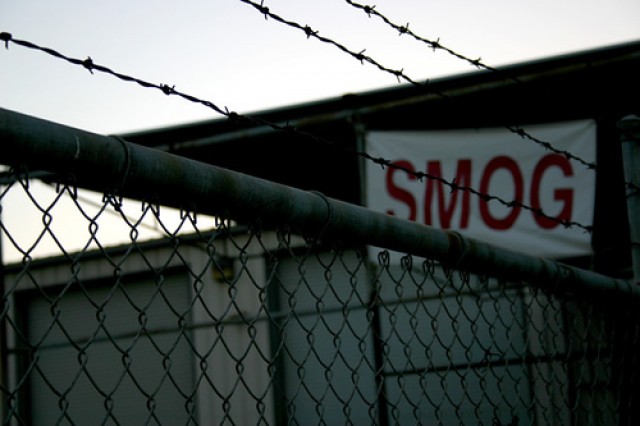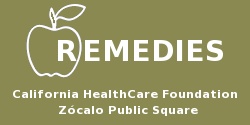
I don’t remember learning the word “asthma”–any more than I remember learning the words “pizza” or “dog.” In Fresno, California, where I was born in 1989, all those terms were familiar.
 In most respects, my childhood was normal. Every day, my mom would pack my lunch, and my dad and our dog, Reeses, would walk me to Cole Elementary School. When we reached the spot where the chain-link fence met the blacktop, we’d wave goodbye. Then, with my lunch pail in hand, I would join the hordes of elementary school children and line up to wait with my classmates for our teacher to walk us, single-file, into our classrooms.
In most respects, my childhood was normal. Every day, my mom would pack my lunch, and my dad and our dog, Reeses, would walk me to Cole Elementary School. When we reached the spot where the chain-link fence met the blacktop, we’d wave goodbye. Then, with my lunch pail in hand, I would join the hordes of elementary school children and line up to wait with my classmates for our teacher to walk us, single-file, into our classrooms.
But recess and P.E. were less normal, even if I didn’t notice it at the time. My classmates and I would grab the essentials for playing outdoors: red bouncy balls, jump ropes, and basketballs. And a handful of people would reach for their inhalers. When I asked what the inhalers were, the response I got was “medicine.” For what? I asked. To breathe, was the answer. I left it at that.
Sometimes, my friends with asthma would have to stop for a moment while we were playing tag or soccer, or they would walk when we were supposed to be running laps. Once, during P.E., a girl in my class had an attack. Her face was red and she was crying, saying that she couldn’t breathe. We all crowded around her, and my teacher told us to step back and give her air. Another student ran inside to get her inhaler. After a few hits of her medicine, the girl calmed down and began to breathe normally. That’s when I began to understand that asthma was more than just breathing from a device before going outside for recess.
In Fresno, bad-air days were so common that I feel I’ve always known the term. Those were the days when outdoor physical activity was discouraged by the Environmental Protection Agency. It meant cancelled sports practices, indoor games in place of recess, and inhalers ready at hand. When I was in high school, I’d regularly drive past the Baz Allergy, Asthma & Sinus Center, where on the building wall was an electronic sign that reported the daily air quality. Percentages of pollen or mildew would vary. But the reading for air quality never did: it was always “unhealthy”–except when it was “very unhealthy.” I used to wonder what point there was in having daily updates that never changed.
When I was 17 and a junior in high school, I came down with a bad cough that lingered for weeks after the rest of my cold symptoms were gone. My mom, slightly worried, took me to the doctor. During my appointment I had to blow on a hollow, straw-like device with a small bead inside and hash marks for measurement on the outside. My breath was only strong enough to get the bead to the halfway mark. That was when my doctor told me that I, too, had developed asthma. She said it was probably the result of living with the bad air in Fresno. I got a prescription for an object that I was very familiar with: an inhaler. I was now one more person among the 157,000 with asthma in Fresno County.
Fresno is in a valley, and smog and pollution get trapped inside. Geography is only part of the problem, though. Growing up, I never learned much about the Fresno air. I knew that it was bad, but I didn’t know why. I certainly never learned about things that could be done to improve it. And I never learned how to protect myself from it.
I hope that changes for kids today. I accepted my asthma diagnosis without much agonizing, because so many of my friends had the same problem. Having asthma in Fresno is normal. But it shouldn’t be.
Lauren Alejo is a literary journalism student at the University of California, Irvine and an intern at Zócalo Public Square.
*Photo courtesy of sarahalex4.




Send A Letter To the Editors